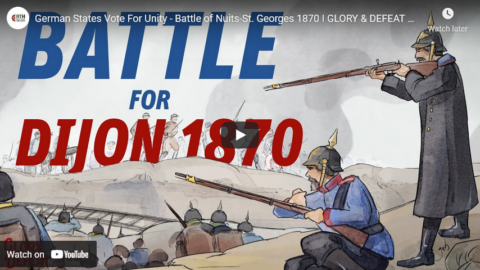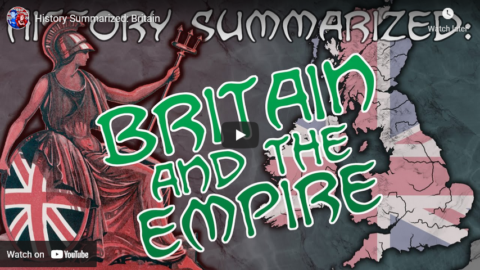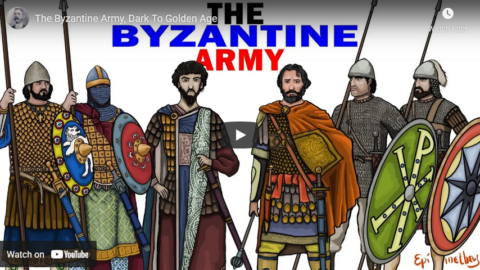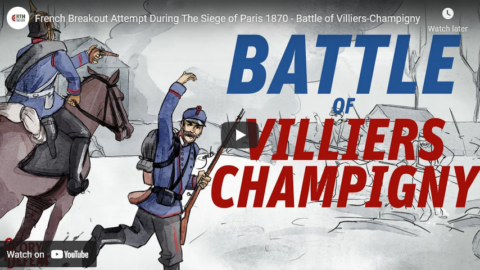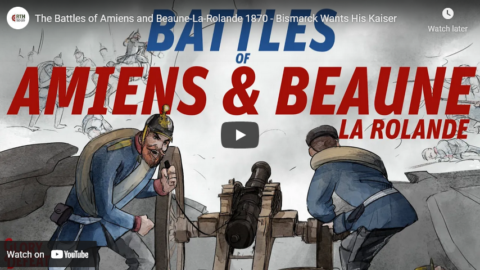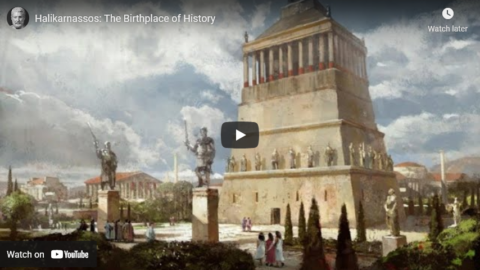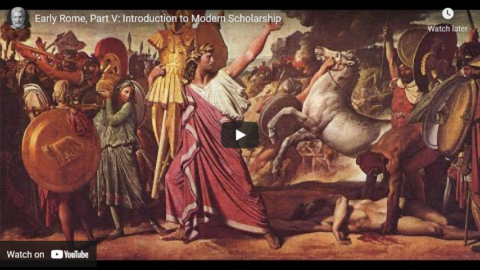It’s funny to think that, when I was a child, the Queen’s Christmas speech was the cue for the nation to fall into a collective postprandial slumber. For the past few years, her nearest and dearest have seen to it that her life has outdone any Bond film when it comes to anticipation of what fresh hell awaits our battle-sore yet unbowed hero(ine) around the next corner. Is she going to ignore her favourite son’s alleged association with a dead paedophile? Her grandson’s allegation that her family contains a racist?
It’s certainly been a bumpy old ride of a year, making Her Majesty’s annus horribilis look like a teddy bears’ picnic. But though I’m not a royalist, I’m counting on this most stiff-upper-lipped of ladies not to mention those two little words which were inescapable this year: “mental health”, or the Mental Elf, as I’ve come to think of him.
Remember our old friends Elf and Safety? They’ve been replaced by Mental Elf, and he’s even more annoying, a nasty little imp intent on making every single member of this once-stoic island race confess to hidden sorrows.
The Royal Victimhood Olympics are now an open-season event, like tennis. The Prince of Wails had a head start, moaning about being sent to boarding school by his “distant” mother who – shame on her! – was a young woman doing her very best in a role she had neither wanted nor expected. Meghan Markle famously fled Frogmore Cottage with the Mental Elf in hot pursuit. Prince William, who appeared to be the sensible one, revealed this week he felt as if “the whole world was dying” after he helped save the life of a child while working as a helicopter pilot for the air-ambulance service.
And of course Sarah Ferguson has referred to herself as “the most persecuted woman in the history of the royal family”. All we need now is for Duchess Kate to weigh in with a detailed account of, say, her PMS problems and we’ve collected the full set of Unhappy Royal Families!
Yes, I know Princess Diana started it. But neurosis was just a part of her emotional repertoire. She realised that one of the best guarantees of good mental health is helping others rather than contemplating one’s navel. Or in the case of the wretched Fergie, one’s novel. The writing of Her Heart for a Compass was reportedly “therapeutic” and boosted her “self-esteem”. Is the world big enough for a more self-loving Fergie?
Julie Burchill, “The Queen is the last sane royal standing”, Spiked, 2021-12-09.
December 21, 2021
QotD: The Royal Victimhood Olympics
December 18, 2021
King James and the search for ready cash
In the latest Age of Invention newsletter, Anton Howes outlines how and why England’s new Stuart king found himself in desperate financial straits very early in his reign:
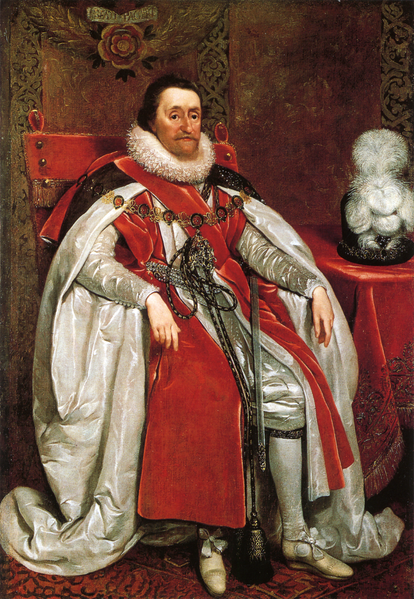
King James I (of England) and VI (of Scotland)
Portrait by Daniel Myrtens, 1621 from the National Portrait Gallery via Wikimedia Commons.
… after a generous honeymoon period of about a year, he and his government soon discovered that they were leaking cash. Despite eliminating the costly wars in Spain and in Ireland, James still had to pay off the debts that his predecessor Elizabeth I had incurred in fighting them. And he had a more extensive, and expensive, royal family to support. He traded the one-off expenses of war for the ongoing expenses of a profligate court.
This may sound like a good deal. James effectively stopped the English Crown splashing out money on really big but infrequent expenses, while increasing its ongoing expenditure — like refraining from buying a new car every few years, while spending a lot more each month eating out at restaurants.
But the Crown’s sources of revenue were ill-suited to this change. The funding for wars had been voted to Elizabeth by Parliament, usually as and when the need arose. Such expenditures were matters of national interest, and she otherwise just relied on other sources of income — ongoing taxes like customs duties, or simply the rent from her lands. When the one-off “subsidies” granted to her by Parliament had not quite been sufficient to cover the costs of the wars, Elizabeth had made up the difference by keeping her own ongoing expenses as low as possible, and took out loans to fill any gaps. It also helped that in the years before crises, Elizabeth had tried to run a surplus, building up a war-chest of cash to dip into.
So switching to the new pattern of expenditure was not straightforward. To increase the Crown’s ongoing expenses, it would have to find more sources of ongoing income, especially as it was already in deficit and had loans to pay off. It was politically impossible for James to ask Parliament for extra one-off subsidies to help him bridge the gap, as some of Elizabeth’s subsidies from 1601 had yet to even be collected. He did actually test the waters about what would happen if he did ask, just in case, but when the matter was raised by some would-be sycophants, it was met with outrage. As one member of Parliament angrily put it, “we have no sheep that yields two fleeces in the year.”
The country was already feeling over-taxed, there were no looming crises to justify such extra taxation, and even if there were, such one-off measures would be unsustainable. James needed to find revenue streams to match his spending leak — and ideally, to even exceed it. His ministers fretted about getting the Crown back into surplus again, to build up another war-chest. Who knew when the next war or rebellion might arise.
So when James called his first Parliament in 1604, it was not really to ask for one-off subsidies as Elizabeth had so often done. Instead, he and his ministers focused on outlining a series of financial deals.
December 17, 2021
German States Vote For Unity – Battle of Nuits-St. Georges 1870 I GLORY & DEFEAT Week 23
Real Time History
Published 16 Dec 2021Sign up for Curiosity Stream and get Nebula bundled in and SAVE 26%: https://curiositystream.com/realtimeh…
While the German delegations arrive in Versailles to set in motion the unification of the German states into a German Reich, the people in nearby Paris are starving and their army is still fighting in the countryside.
» THANK YOU TO OUR CO-PRODUCERS
John Ozment, James Darcangelo, Jacob Carter Landt, Thomas Brendan, Kurt Gillies, Scott Deederly, John Belland, Adam Smith, Taylor Allen, Rustem Sharipov, Christoph Wolf, Simen Røste, Marcus Bondura, Ramon Rijkhoek, Theodore Patrick Shannon, Philip Schoffman, Avi Woolf,» OUR PODCAST
https://realtimehistory.net/podcast – interviews with historians and background info for the show.» LITERATURE
Arand, Tobias: 1870/71. Der Deutsch-Französische Krieg erzählt in Einzelschicksalen. Hamburg 2018Gouttman, Alain: La grande défaite. 1870-1871. Paris 2015
» SOURCES
Hérisson, Maurice d’: Journal d’un officier d’ordonnance. Paris 1885Kriegsgeschichtliche Abteilung des Großen Generalstabs (Hrsg.): Der deutsch-französische Krieg 1870-71. 2.2. Berlin 1880
Kürschner, Joseph (Hrsg.): Der große Krieg 1870-71 in Zeitberichten. Leipzig o.J. (1895)
Meisner, Heinrich Otto (Hrsg.): Kaiser Friedrich III. Das Kriegstagebuch von 1870/71. Berlin, Leipzig 1926
Pietsch, Ludwig: Von Berlin nach Paris. Kriegsbilder 1870-71. Berlin 1871
Schikorsky, Isa (Hrsg.): “Wenn doch dies Elend ein Ende hätte”. Ein Briefwechsel aus dem Deutsch-Französischen Krieg 1870/71. Köln, Weimar, Wien 1999
» OUR STORE
Website: https://realtimehistory.net»CREDITS
Presented by: Jesse Alexander
Written by: Cathérine Pfauth, Prof. Dr. Tobias Arand, Jesse Alexander
Director: Toni Steller & Florian Wittig
Director of Photography: Toni Steller
Sound: Above Zero
Editing: Toni Steller
Motion Design: Philipp Appelt
Mixing, Mastering & Sound Design: http://above-zero.com
Maps: Battlefield Design
Research by: Cathérine Pfauth, Prof. Dr. Tobias Arand
Fact checking: Cathérine Pfauth, Prof. Dr. Tobias ArandChannel Design: Battlefield Design
Contains licensed material by getty images
All rights reserved – Real Time History GmbH 2021
December 10, 2021
History Summarized: Britain and the Empire
Overly Sarcastic Productions
Published 20 Aug 2021How is it that the history of some islands off the northern coast of Europe balloons into a worldwide history? Empire is how! Let’s dig into the history of Britain since Union of the Crowns of England and Scotland in 1603, and follow that narrative through the monumental rise and precipitous fall of the British Empire.
Special thanks to the community members on Discord who assisted me with my script: Corvin the Crow, Johnny, Jdedredhed, Joud, Jéuname, Klieg, RileyTheProcrastinator, The Missing Link, and thesleepingmeerkat
SOURCES & Further Reading: The Great Courses Lecture series Foundations of Western Civilization II: A History of the Modern Western World by Robert Buchols lectures 11, 12, 13, 14, 15, 18, 19, 20, 21, 22, 30, The History Of England volumes 3 Rebellion, 4 Revolution & 5 Dominion by Peter Ackroyd, Scotland: A Concise History by Fitzroy MacLean, The Great Cities in History by John Julius Norwich, A Concise History of Wales by Geraint H. Jenkins, Sea Power: The History and Geopolitics of the World’s Oceans by James Stavridis.
Our content is intended for teenage audiences and up.
PATREON: https://www.Patreon.com/OSP
PODCAST: https://overlysarcasticpodcast.transi…
DISCORD: https://discord.gg/osp
MERCH LINKS: http://rdbl.co/osp
OUR WEBSITE: https://www.OverlySarcasticProductions.com
Find us on Twitter https://www.Twitter.com/OSPYouTube
Find us on Reddit https://www.Reddit.com/r/OSP/
December 7, 2021
The Byzantine Army, Dark To Golden Age
Epimetheus
Published 22 Mar 2019The Byzantine army, Dark to Golden age
This video was sponsored by Skillshare
Sources
Romano-Byzantine armies 4th-9th Centuries (David Nicolle)
Larousse Encyclopedia of Ancient and Medieval History (Marcel Dunan)
The Late Roman Infantryman (Simon MacDowall)
Byzantium Beyond the Golden Gate
Fall of the West (John Lambshead)
The Late Roman Cavalryman (Simon MacDowall)Tags:
Byzantine history, Byzantine, Byzantine documentary, Eastern Roman, Byzantine army, ancient history, Byzantine Cataphract, Byzantine Roman, history, Bulgaria Byzantium, Byzantine military, Byzantine legion, Byzantine empire, fall Byzantine, ancient, Rome, Constantinople, Byzantine empire documentary, crash course Byzantine empire, Byzantium, Byzantine army structure, Byzantine vs Roman, theme system, theme Byzantine, Roman tactics, Byzantine tactics, eastern Roman empire
From the comments:
Epimetheus
2 years ago (edited)
Notes/additional info:1. Should the empire be called Byzantine, Roman or Greek? I see people arguing for each of these in the comments and there is merit to each of these; but it is important to note that they called themselves Roman, they were majority Greek in population and language spoken, and the term Byzantine is useful in differentiating the time period and has been colloquially used for a long time (although not during the empire) Being a reference to the earlier name of Byzantium for the city of Constantinople.
2. When I refer to “native troops” this includes many other ethnic groups living within the empire, notably the Armenians who lived in Anatolia for hundreds of years and had assimilated in many ways but maintained different views on aspects of the Christian faith which was the most striking differentiating factor between them and the rest of the population of the empire.
3. The Strategos and Domestikos label should be switched on the captions at 6 mins 17 secs in. A Strategos led a Thema(ta) and a Domestikos led a Tagma(ta). Unfortunately I switched those by accident and stared at the screen for a while and did not notice that … sorry guys ;(
4. The Varangian Guard was a personal bodyguard unit to the emperor which are pretty cool, they were mostly comprised of Norsemen (Scandinavians), Rus and Saxons. They are the unit I refer to when I mention a Scandinavian unit.
5. The coolest unit (in my opinion) that I did not mention was the Akritai which were kinda like the Cossacks in that they were a loosely controlled border guard on the eastern side of the empire; and were the subject of much folklore and poems and such.
December 4, 2021
When King James VI became King James I and VI
In his latest Age of Invention newsletter, Anton Howes discusses how the King of Scotland succeeded to the English throne as well:

King James I (of England) and VI (of Scotland)
Portrait by Daniel Myrtens, 1621 from the National Portrait Gallery via Wikimedia Commons.
It’s late March 1603, and an exhausted messenger arrives in Edinburgh bearing a sapphire ring. He has ridden for over two days straight, over hundreds of miles, and his hair and clothes are matted with blood — on the way he had fallen from his horse, a hoof striking him directly in the head. It’s a miracle he’s alive, but he knows it has been worth it. He is the very first to tell you that your childless first cousin twice removed — the killer of your mother, whom you never knew — is finally dead. You, King James VI of Scotland, are James I of England as well.
[…]
James’s accession was a frenzy. From the very moment of Elizabeth’s death, her entire patronage network was turned on its head. Her chief ministers, the Privy Council, were relatively safe. Some of them had been corresponding with James for years. But they could only look on, anxiously, as a rush of would-be cronies went north to meet their new king. The exhausted messenger with the sapphire ring, Sir Robert Carey, was just the first. Carey had been related to Elizabeth I on her mother’s side — he was her first cousin once removed. (Carey’s grandmother was the “other Boleyn girl”, played by Scarlett Johansson in the 2008 film — although there’s no solid evidence, it’s not totally impossible that Carey was actually related to Elizabeth on her father’s side instead …) But that family connection meant nothing now that the queen was dead.
The sudden reset of the source of all patronage meant that the earlier the access to the new king’s person, the greater the chance of gaining his favour. Carey may have angered the Privy Council by riding ahead of their formal letters to James, but his exertion won him an on-the-spot appointment as a gentleman of the bedchamber, and his wife became a lady in waiting to James’s queen. The Careys were soon charged with the care of the royal couple’s younger sickly child, and when that child eventually became Charles I, Carey was made Earl of Monmouth. Not a bad result for a head wound and a two days’ ride, though I’m sure the horses would disagree. An old proverb about England was that it was “a paradise for women, a purgatory for servants, and a hell for horses” — something that James’s accession really put to the test. One teenage noblewoman reported how she and her mother killed three horses in a single day, pushing them hard despite the heat, in their rush to meet the new queen.
Just as courtiers flocked to James, however, the king wanted to win friends and allies too. So he handed out favours like confetti. Before he had even reigned a single year, he had created 934 knighthoods — already more than the 878 that Elizabeth I, her generals, and her lord deputies in Ireland had created over the course of her entire 45-year reign. One morning, during his journey down to London, James knighted more people than Elizabeth had in her first five years — all before he’d even had his breakfast. The sheer volume of new knighthoods prompted Francis Bacon — one of about 300 to be knighted in London ahead of the coronation — to call it a “divulged and almost prostitute title”.
The same went for peerages. Elizabeth, over her long reign of almost half a century, had created only 18 new titles. James, before he had even been crowned, had already created 12 — mostly turning knights into lords, and raising some lords into earls. Along with the honours came grants of land, annual pensions, and one-off gifts — not only to James’s new English courtiers, but to his old Scottish favourites too. James’s arrival was an explosion of largesse. (Not all were happy about the relative loss of favour, of course […] at least one pro-invention courtier got involved in a treasonous plot against the new king and ended up losing his head.)
James’s largesse even extended to policy. As he triumphantly marched into London, he issued a proclamation to immediately suspend all of Elizabeth’s patent monopolies, to be re-granted pending review. (This did not apply to patents for trading corporations or guilds.) Rather than leaving the validity of patents to be tested in the common-law courts, at great legal cost to those affected, he would have his Privy Council systematically examine them first, only allowing them if they were in the public interest. He characterised it as a continuation — even a “perfecting” — of Elizabeth’s partial measures a couple of years earlier, which we discussed in Part II. With his proclamation also condemning various other unpopular things, like high court fees, his new subjects were overjoyed.
But the honeymoon was not to last.
December 3, 2021
French Breakout Attempt During The Siege of Paris 1870 – Battle of Villiers-Champigny
Real Time History
Published 2 Dec 2021Sign up for Curiosity Stream and get Nebula bundled in and SAVE 26%: https://curiositystream.com/realtimeh…
The Siege of Paris has been going on for months in November 1870 and the population is starving. The French Army has previously tried and failed to break out but this week they are starting their biggest attempt yet — not knowing that it has been doomed from the start.
» THANK YOU TO OUR CO-PRODUCERS
John Ozment
James Darcangelo
Jacob Carter Landt
Thomas Brendan
James Giliberto
Kurt Gillies
Albert B. Knapp MD
Tobias Wildenblanck
Richard L Benkin
Scott Deederly
John Belland
Adam Smith
Taylor Allen
Jim F Barlow
Rustem Sharipov» OUR PODCAST
https://realtimehistory.net/podcast – interviews with historians and background info for the show.» LITERATURE
Arand, Tobias: 1870/71. Der Deutsch-Französische Krieg erzählt in Einzelschicksalen. Hamburg 2018Ders.: “Rogerowski oder Rasumowsky? Überlegungen zur nationalen ‘Meistererzählung’ in Fontanes ‘Kriegsgefangen’“, in: Fontane-Blätter 105 (2018). S. 61-86
Ders.: “‘… dazu find ich keine Worte’ – Der Blick auf den Krieg von 1870/71 in Erinnerungsbüchern deutscher Veteranen“, in: Nation im Siegesrausch. Württemberg und die Gründung des Deutschen Reichs 1870/71, hrsg. u. bearb. von W. Mährle. Stuttgart 2020. S. 85-98
Bourguinat, Nicolas and Gilles Vogt: La guerre franco-allemande de 1870. Une histoire globale. 2020
Gouttman, Alain: La grande défaite. 1870-1871. Paris 2015
Lecaillon, Jean-François: Les Femmes et la Guerre de 1870/71. Histoire d’un engagement occulté. Paris 2020
» SOURCES
Hérisson, Maurice d’: Journal d’un officier d’ordonnance. Paris 1885De Trailles, Paul et Henry: Les femmes de France pendant la guerre et les deux sièges de Paris. Paris 1872
Fontane, Theodor: Der Krieg gegen Frankreich. Bd. 3. Berlin 1874
Fontane, Theodor: Kriegsgefangen. Erlebtes 1870. Briefe 1870/71. Berlin (Ost) 1984
Kühnhauser, Florian: Kriegs-Erinnerungen eines Soldaten des königlich bayerischen Infanterie Leibregiments. Partenkirchen 1898
N. N. (Hrsg.): Bismarcks Briefe an seine Gattin aus dem Kriege 1870/71. Stuttgart, Berlin 1903
Schikorsky, Isa (Hrsg.): “Wenn doch dies Elend ein Ende hätte”, Ein Briefwechsel aus dem Deutsch-Französischen Krieg 1870/71. Köln, Weimar, Wien 1999
Wöllwarth, Julie von: Unter den Verwundeten von 1870/71. Aufzeichnungen aus einer großen Zeit. o.O, o.J. (1890)
Zola, Émile: La Débacle. Paris 1892
» OUR STORE
Website: https://realtimehistory.net»CREDITS
Presented by: Jesse Alexander
Written by: Cathérine Pfauth, Prof. Dr. Tobias Arand, Jesse Alexander
Director: Toni Steller & Florian Wittig
Director of Photography: Toni Steller
Sound: Above Zero
Editing: Toni Steller
Motion Design: Philipp Appelt
Mixing, Mastering & Sound Design: http://above-zero.com
Maps: Battlefield Design
Research by: Cathérine Pfauth, Prof. Dr. Tobias Arand
Fact checking: Cathérine Pfauth, Prof. Dr. Tobias ArandChannel Design: Battlefield Design
Contains licensed material by getty images
All rights reserved – Real Time History GmbH 2021
November 27, 2021
Making a Medieval TART DE BRY (Brie Tart) | Brie: The King of Cheese
Tasting History with Max Miller
Published 28 Apr 2020This Tart de Bry, or Brie Tart, comes from The Forme of Cury and was served at the table of King Richard II (1367 – 1400). Its flavor is nearly as rich as the history of the cheese that goes into it, and in this episode I will explore both.
Help Support the Channel with Patreon: https://www.patreon.com/tastinghistory
Follow Tasting History with Max Miller:
Instagram: https://www.instagram.com/tastinghist…
Twitter: https://twitter.com/TastingHistory1Episodes mentioned in this video:
Medieval Cheesecake (for tart dough) – https://youtu.be/GCCJ2Qpr1nM
Medieval Cheese (for straining cheese) – https://youtu.be/vlQZ3NPnoLk
Rapé Fig Spread: https://youtu.be/_o7Oq-OjKu8LINK TO INGREDIENTS & TOOLS**
SAFFRON THREADS – https://amzn.to/2yTwoPS
PIE SHIELD – https://amzn.to/2YeTnjh
TART TIN – https://amzn.to/2yPbUrCLINK TO SOURCE:
The Forme of Cury: https://amzn.to/31frAAy**Amazon offers a small commission on products sold through their affiliate links, so each purchase made from this link, whether this product or another, will help to support this channel with no additional cost to you.
TART DE BRY
RECIPE (1390 – The Forme of Cury)
Take a crust ynch depe in a trape. Take yolkes of ayren rawe and chese ruayn and medle it and the yolkes together. And do thereto powdor gynger, sugar, safron and salt. Do it in a trape, bake it, and serve it forth.MODERN RECIPE (Based on Lorna J Sass’s adaptation from To The King’s Taste – https://amzn.to/3bNg2XE)
INGREDIENTS
– 1 pound of Brie cheese, the younger the better
– 6 egg yolks
– ⅛ tsp saffron (about 10 threads ground up)
– ¾ tsp light brown sugar or more if you want a sweeter tart.
– ⅜ teaspoon powdered ginger
– A pinch of salt
– A sprinkle of nutmeg or cinnamon (optional)METHOD
1. Preheat the oven to 425°F / 220°C.
2. Roll out your tart dough to about an ⅛ inch thick and line your tin. Add pie weights and set in the oven to blind bake for 10 minutes. Remove the crust and remove the pie weights. If the bottom of the crust is not fully cooked, return it to the oven without the weights for 5 minutes. Once out of the oven, press down the bottom of the crust if it has risen. Allow crust to cool completely and reduce the oven temperature to 350°F / 175°C.
3. Remove the rind from the brie saving some to the side. Then cut the brie into small pieces and place in a blender with the egg yolks. Blend together. Then add the saffron, brown sugar, ginger, and salt and blend to combine.
4. Place a bit of the rind on the bottom of the tart and add the cheese mixture and smooth the top. If you are using cinnamon or nutmeg, sprinkle a bit on top now.
5. Bake at 350°F / 175°C for 30 to 40 minutes or until the top is set and begins to brown. Serve warm or at room temperature.SOURCES
The Forme of Cury – By Samuel Pegge – https://amzn.to/3cXBycA
To The King’s Taste – Lorna J. Sass – https://amzn.to/3bNg2XE
The Course of History: 10 Meals that Changed the World – https://amzn.to/2yWuIoL
Brie Cheese History – https://www.thespruceeats.com/history…PHOTOS
Abbaye Notre-Dame-de-Jouarre – Fredlesles CC BY-SA (https://creativecommons.org/licenses/…)
By J. Chéreau – Musée de la Révolution française, CC BY-SA 4.0, https://commons.wikimedia.org/w/index…
A carriage underside has broken sending the occupants flying Wellcome / CC BY (https://creativecommons.org/licenses/…)
Blue Stilton – Coyau / Wikimedia Commons / CC BY-SA 3.0
Limberger Cheese – Original photo by John Sullivan
Gruyere – © Rolf Krahl / CC BY (https://creativecommons.org/licenses/…)
Stracchino – Cvezzoli / CC BY-SA (https://creativecommons.org/licenses/…)
Brie cheese with fresh thyme on black background – Marco Verch / CC BY-SA 2.0 (https://flickr.com/photos/160866001@N…)#brie #cheese #medieval #medievalfood #tastinghistory #medievalrecipes
November 26, 2021
The Battles of Amiens and Beaune-La-Rolande 1870 – Bismarck Wants His Kaiser
Real Time History
Published 25 Nov 2021Support us on Patreon: https://patreon.com/realtimehistory
After a brief break in the fighting, the Franco-Prussian War continues in late November with the Battles of Amiens and Beaune-La-Rolande. Both sides are exhausted and the casualties are mounting. In the meantime Bismarck is trying to convince the German states of a new German Emperor.
» THANK YOU TO OUR CO-PRODUCERS
John Ozment
James Darcangelo
Jacob Carter Landt
Thomas Brendan
James Giliberto
Kurt Gillies
Albert B. Knapp MD
Tobias Wildenblanck
Richard L Benkin
Scott Deederly
John Belland
Adam Smith
Taylor Allen
Jim F Barlow
Rustem Sharipov» OUR PODCAST
https://realtimehistory.net/podcast – interviews with historians and background info for the show.» LITERATURE
Arand, Tobias: 1870/71. Die Geschichte des Deutsch-Französischen Krieges erzählt in Einzelschicksalen. Hamburg 2018Arand, Tobias: Gestorben für “Vaterland” und “Patrie”. Die toten Krieger aus dem Feldzug von 1870/71 auf dem “Alten Friedhof” in Ludwigsburg. Ludwigsburg 2012
Barry, Quintin: The Franco-Prussian War 1870-71. Vol 2 After Sedan. Solihull, 2007
Gouttman, Alain: La grande défaite. 1870-1871. Paris 2015.
Howard, Michael: The Franco-Prussian War. London, 1961
» SOURCES
Braun, Lily (Hrsg.): Kriegsbriefe aus den Jahren 1870/71 von Hans von Kretschman. Berlin 1911Bundesgesetzblatt des Norddeutschen Bundes, Band 1867, Nr. 1, Seite 1–23
Fontane, Theodor: Kriegsgefangen. Erlebtes 1870. Briefe 1870/71. Berlin (Ost) 1984
Haus der Bayerischen Geschichte (Hrsg.): Gründung des Deutschen Kaiserreichs 1871. Unterrichtsmaterialien. o. O. 2011
Königliche Geheime Ober-Hof-Druckerei (Hrsg.): Verlust-Listen der Königlich-Preußischen Armee und der Großherzoglich Badischen Division aus dem Feldzuge 1870-1871. Berlin 1871
Kühnhauser, Florian: Kriegs-Erinnerungen eines Soldaten des königlich bayerischen Infanterie Leibregiments. Partenkirchen 1898
Kürschner, Joseph (Hrsg.): Der große Krieg in Zeitberichten. Leipzig o.J. (1895)
Moltke, Helmuth von: Geschichte des deutsch-französischen Krieges von 1870-71. Berlin 1891
Zeitz, Karl: Kriegserinnerungen eines Feldzugsfreiwilligen aus den Jahren 1870 und 1871. Altenburg 1905
» OUR STORE
Website: https://realtimehistory.net»CREDITS
Presented by: Jesse Alexander
Written by: Cathérine Pfauth, Prof. Dr. Tobias Arand, Jesse Alexander
Director: Toni Steller & Florian Wittig
Director of Photography: Toni Steller
Sound: Above Zero
Editing: Toni Steller
Motion Design: Philipp Appelt
Mixing, Mastering & Sound Design: http://above-zero.com
Maps: Battlefield Design
Research by: Cathérine Pfauth, Prof. Dr. Tobias Arand
Fact checking: Cathérine Pfauth, Prof. Dr. Tobias ArandChannel Design: Battlefield Design
Contains licensed material by getty images
All rights reserved – Real Time History GmbH 2021
November 19, 2021
Bismarck Gets Closer To German Unification – A New Spanish King I GLORY & DEFEAT
Real Time History
Published 18 Nov 2021Sign up for Curiosity Stream and get Nebula bundled in and SAVE 26%: https://curiositystream.com/realtimeh…
While the Franco-Prussian War is continuing its messy guerilla phase, the German leaders are negotiating towards a united Germany. Hesse and Baden join the promptly renamed German Confederation — but Württemberg and Bavaria still want more concessions. Meanwhile the question of Spanish succession that started the war is solved in Madrid.
» THANK YOU TO OUR CO-PRODUCERS
John Ozment
James Darcangelo
Jacob Carter Landt
Thomas Brendan
James Giliberto
Kurt Gillies
Albert B. Knapp MD
Tobias Wildenblanck
Richard L Benkin
Scott Deederly
John Belland
Adam Smith
Taylor Allen
Jim F Barlow
Rustem Sharipov» OUR PODCAST
https://realtimehistory.net/podcast – interviews with historians and background info for the show.» LITERATURE
Arand, Tobias: 1870/71. Der Deutsch-Französische Krieg erzählt in Einzelschicksalen. Hamburg 2018Gouttman, Alain: La grande défaite. 1870-1871. Paris 2015
Koch, Roland : “Les canons à balles dans l’armée du Rhin en 1870” in Revue historique des armées, 255 (2009), p. 95-107.
» SOURCES
Braun, Lily (Hrsg): Kriegsbriefe aus den Jahren 1870/71 von Hans von Kretschman weiland General der Infanterie. Berlin 1911Carr, Raymond: Spain 1808–1939. Oxford: At the Clarendon Press, 1975
Deuerlein, Ernst: Die Gründung des Deutschen Reichs 1870/71 in Augenzeugenberichten. Düsseldorf 1970
Goncourt, Edmond de: Journal des Goncourts. II.1. 1870-1871. Paris 1890
Kühnhauser, Florian: Kriegs-Erinnerungen eines Soldaten des königlich bayerischen Infanterie Leibregiments. Partenkirchen 1898
Lowndes, Emma: Récits de femmes pendant la guerre franco-prussienne (1870-1871). Paris, 2013.
Meisner, Heinrich Otto (Hrsg.): Kaiser Friedrich III. Das Kriegstagebuch von 1870/71. Berlin, Leipzig 1926
N.N: + Amadeus von Savoyen in: Neue Presse v. 19. Januar 1890. S. 2
N. N. (Hrsg.): Bismarcks Briefe an seine Gattin aus dem Kriege 1870/71. Stuttgart, Berlin 1903
Schikorsky, Isa (Hrsg.). “Wenn doch dies Elend ein Ende hätte”. Ein Briefwechsel aus dem Deutsch-Französischen Krieg 1870/71. Köln, Weimar, Wien 1999
» OUR STORE
Website: https://realtimehistory.net»CREDITS
Presented by: Jesse Alexander
Written by: Cathérine Pfauth, Prof. Dr. Tobias Arand, Jesse Alexander
Director: Toni Steller & Florian Wittig
Director of Photography: Toni Steller
Sound: Above Zero
Editing: Toni Steller
Motion Design: Philipp Appelt
Mixing, Mastering & Sound Design: http://above-zero.com
Maps: Battlefield Design
Research by: Cathérine Pfauth, Prof. Dr. Tobias Arand
Fact checking: Cathérine Pfauth, Prof. Dr. Tobias ArandChannel Design: Battlefield Design
Contains licensed material by getty images
All rights reserved – Real Time History GmbH 2021
November 5, 2021
QotD: The Dame of Sark
The death at ninety of Dame Sibyl Hathaway, the Dame of Sark, removed the only person in the British Isles whom I still wanted to meet. Unfortunately, she rejected all my advances. She was a model ruler for out times, forbidding not only cars and aircraft on her island, but also trade unions, taxation, female dogs, divorce, and most of the troublesome manifestations of our age. I had always hoped to persuade this admirable lady to take England under her rule when our parliamentary system finally disintegrates. Now she is dead I think I shall leave the country for a time — probably for a very long time. I can see no hope.
Auberon Waugh, Diary, 1974-07-25.
November 3, 2021
Halikarnassos: The Birthplace of History
Thersites the Historian
Published 24 Feb 2020A Greek polis which became the capital city of a Persian satrapy, Halikarnassos is best known as the birthplace of Herodotos and the site of the Mausoleum. A monarchy in a sea of aristocratic and oligarchic governments, Halikarnassos was one of the more unique places in the wider Greek world.
Patreon link: https://www.patreon.com/thersites
PayPal link: paypal.me/thersites
Twitter link: https://twitter.com/ThersitesAthens
Minds.com link: https://www.minds.com/ThersitestheHis…
Steemit/dtube link: https://steemit.com/@thersites/feed
BitChute: https://www.bitchute.com/channel/jbyg…
Backup Channel: https://www.youtube.com/channel/UCUrD…
October 23, 2021
The English Statute of Monopolies gets far more credit than it actually deserves
The Statute of Monopolies (1624) is often said to have been critical in helping to start England on the road to the Industrial Revolution, but in the latest Age of Invention newsletter Anton Howes argues it is far more complicated than it seems:
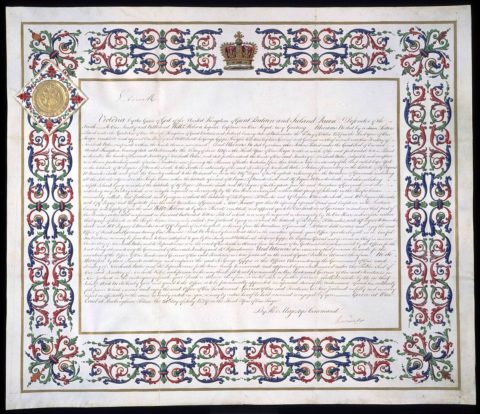
Letters Patent Issued by Queen Victoria, 1839. On 15 June 1839 Captain William Hobson was officially appointed by Queen Victoria to be Lieutenant Governor General of New Zealand. Hobson (1792 – 1842) was thus the first Governor of New Zealand.
Constitutional Records group of Archives NZ via Wikimedia Commons.
One of the most frequently mentioned landmarks in the history of intellectual property is the Statute of Monopolies, passed by the English parliament in 1624. I’ve often seen it lauded as the beginning of the system of patents for invention, or the first patent law. I remember giving a talk a few years ago where I downplayed the role of formal institutions in encouraging the Industrial Revolution, prompting an outraged economist in the audience to point to the law as a sort of gotcha — “here’s a better explanation: with patents you incentivise invention, and the Brits had just invented patents”.
Which is all to illustrate that the Statute of Monopolies is often fundamentally misunderstood. So what, exactly, did it actually do? It’s a tale of opportunism, corruption, and court intrigue, with some actual innovation inbetween. The whole saga ended Francis Bacon’s political career, led to a major constitutional crisis, and set the scene for how inventors were to behave and act for well over a century. In this first part, I’ll give the context you’ll need to really appreciate what was going on, and I’ll publish the rest in the weeks to come.
First off, the Statute of Monopolies was certainly not the first patent law. Venice’s senate had enacted a law on monopolies for invention as early as 1474. But even then, we shouldn’t be looking for statutes at all. The history of patents does not begin in 1474, but much earlier, with plenty of monopolies over new inventions having already been granted by the ruling grand council of Venice, and by the authorities of other Italian cities like Florence. The key thing to recognise about early patents is that they were not a creation of parliaments or their statutes, but of those in charge. They were the creation of sovereigns, a creature of kings and queens (or in the case of republics like Venice, of governing councils).
As regular readers of this newsletter might remember, patent monopolies for invention had already had long history in England, well before 1624. Patents in general were a very ordinary tool of English monarchs, used to communicate their will. By issuing letters patent, monarchs essentially issued public orders, open for everyone to see. (Think “patently”, as in clearly or obvious, which comes from the same root.) Monarchs used letters patent to grant titles and lands, appoint or remove people as officials, extend royal protections to foreign immigrants, incorporate cities, guilds, even theatre troupes — in general, just to rule.
And, eventually, English monarchs copied the Venetians by issuing letters patent to grant temporary monopolies to particular people, to encourage them to make discoveries, publish books, or introduce new industries or inventions to the realm. It’s only over the passage of centuries that we’ve come to refer to patents for invention — a mere subset of letters patent, and really even a mere subset of patent monopolies for all sorts of other creative work — as simply patents. Intellectual property was thus a ruler-granted privilege, created in the same way that a town gains the official status of a city, or a commoner becomes a knight. English monarchs began granting monopolies for discovering new territories and trade routes from 1496, for printing certain books from 1512, and for introducing new industries or inventions from 1552 (with one weird isolated exception from as early as 1449).
September 21, 2021
Early Rome, Part V: Introduction to Modern Scholarship
Thersites the Historian
Published 6 Sep 2021In this video, we look at what modern scholars tend to think about early Rome and some of the ways in which they approach this fraught topic.
Patreon link: https://www.patreon.com/thersites
PayPal link: paypal.me/thersites
Discord: https://discord.gg/QCaXXFr
Brave Browser: https://brave.com/noa557
Twitter link: https://twitter.com/ThersitesAthens
Minds.com link: https://www.minds.com/ThersitestheHis…
Steemit/dtube link: https://steemit.com/@thersites/feed
BitChute: https://www.bitchute.com/channel/jbyg…
September 15, 2021
QotD: The cult of Napoleon
The worship of Napoleon has always been a French mystery. Is it spontaneous, reflecting nostalgia for empire, or something organized by the state, which has inherited from that period a matchless taste for authority? French schoolchildren are taught only the benefits of the emperor’s reign. According to our textbooks, Napoleon is supposed to have endowed France with a perfect legal system that still governs us today and to have caused the winds of freedom to blow across Europe. Each year, a dozen more books are published in France touting Napoleon’s glory. He has been represented more often than Christ on film, always as a positive hero.
Other Europeans see him very differently. While French historians amplify the myth that Napoleon himself created by dictating his idealized Memoires on St. Helena, English, German, Russian and Spanish authors count up the massacres and the destruction of their cities and their civilization.
Napoleon began shaping his reputation while he was still alive. He commonly wrote reports of his victories before the battles had even begun, which makes him the founding father of fake news. Certain disasters, such as the Battle of Eylau (now in Poland) against the Russians and Prussians, for example, are still inscribed in the walls of the Arc de Triomphe in Paris as if they were victories, since that is how they were first announced.
Since France is now part of Europe — rather than Europe becoming part of France, as Napoleon wished — what should we commemorate? French victories, such as Austerlitz, were defeats for the Russians and Austrians. Waterloo, a day of mourning for the French, is a symbol of liberation for the British, Germans, and Dutch. In any case, since the return of Napoleon’s ashes, our view of history has changed; the fate of people concerns us more than the fate of armies. Napoleon’s stature does not benefit from this change of perspective. To finance his wars, he ruined Europe, banning international commerce (only smugglers got rich), conscripting peasants, ravaging harvests, and confiscating horses. How should we commemorate the Russian and German campaigns of 1812 and 1813, when the Grand Army left in its wake not the liberation of peoples, but famine and epidemic? Worst still, how should we commemorate the restoration of slavery in the French Antilles, Guadeloupe, and Santo Domingo (Haiti), where the deputies of France’s Revolutionary Convention had abolished it in 1794?
Guy Sorman, “Which Napoleon?”, City Journal, 2021-05-14.

